Applications
Smart road technology connects vehicles, infrastructure, and data to create safer, more efficient transportation networks. By communicating directly with vehicles and city systems, smart roads enhance technologies such as advanced driver assistance, autonomous operation, and connected mobility. Together, these innovations are redefining how cities move people and goods through intelligent, data-driven transportation systems.
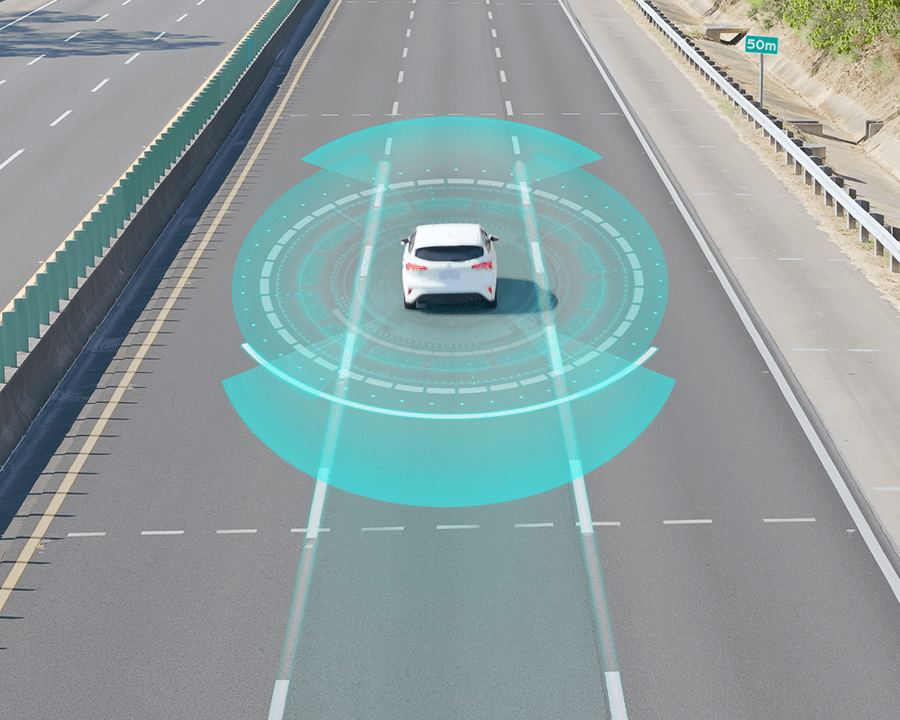
Advanced Driver Assistance Systems (ADAS)
Advanced Driver Assistance Systems (ADAS) use sensors such as cameras, radar, and LiDAR to help drivers operate more safely and reduce human error. Features such as adaptive cruise control, lane-keeping assist, and automatic emergency braking extend a vehicle’s awareness of its surroundings.
However, ADAS performance can be limited by adverse weather, poor road markings, or objects outside sensor range. This is where smart roads become transformative. By embedding sensors, communication infrastructure, and data analytics into pavement, smart roads provide real-time information about traffic flow, road conditions, hazards, and road geometry.
This two-way communication allows ADAS to anticipate conditions beyond its line of sight—such as a blind turn or sudden traffic jam—creating a more intelligent and connected transportation ecosystem that makes travel safer and more efficient.
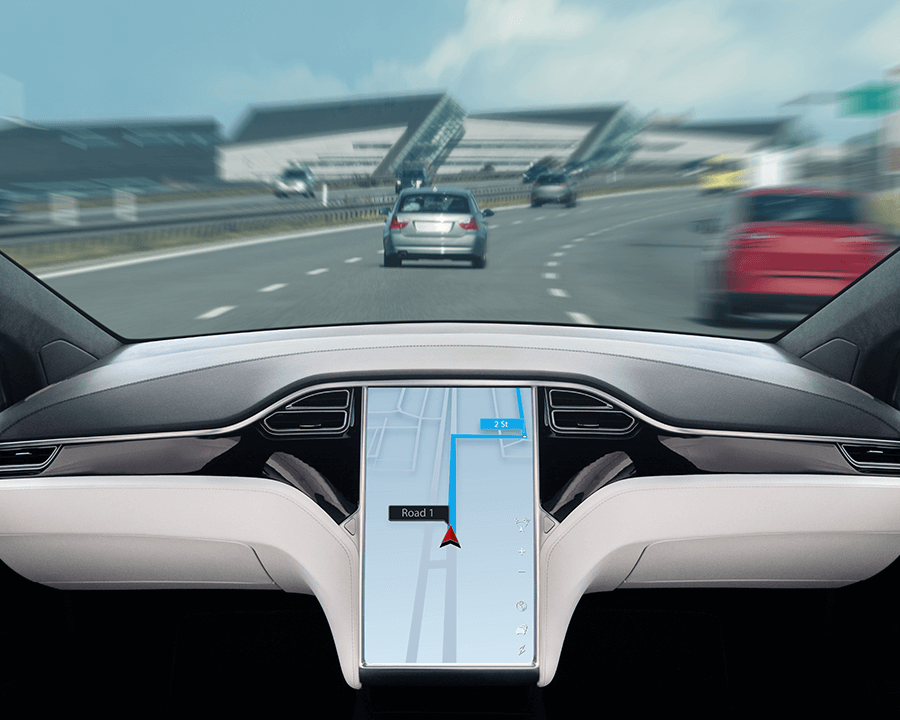
Autonomous Vehicles (AVs)
Autonomous Vehicles (AVs) build on ADAS principles, aiming for full self-operation without human input. While AVs rely on their own sensors and AI to navigate, they still face challenges in complex or unexpected scenarios.
Smart roads integrated with ADAS offer a decisive advantage. Equipped with sensors and communication technology, they act as an external perception system that delivers real-time data beyond a vehicle’s line of sight. Through vehicle-to-infrastructure (V2I) communication, AVs can detect conditions ahead, such as blind turns, traffic congestion, or pedestrians in obscured crosswalks.
Combining onboard ADAS with the broader awareness of a smart road network enables autonomous systems to make faster, more informed decisions. This integration is a key step toward safer, more reliable, and fully autonomous transportation.
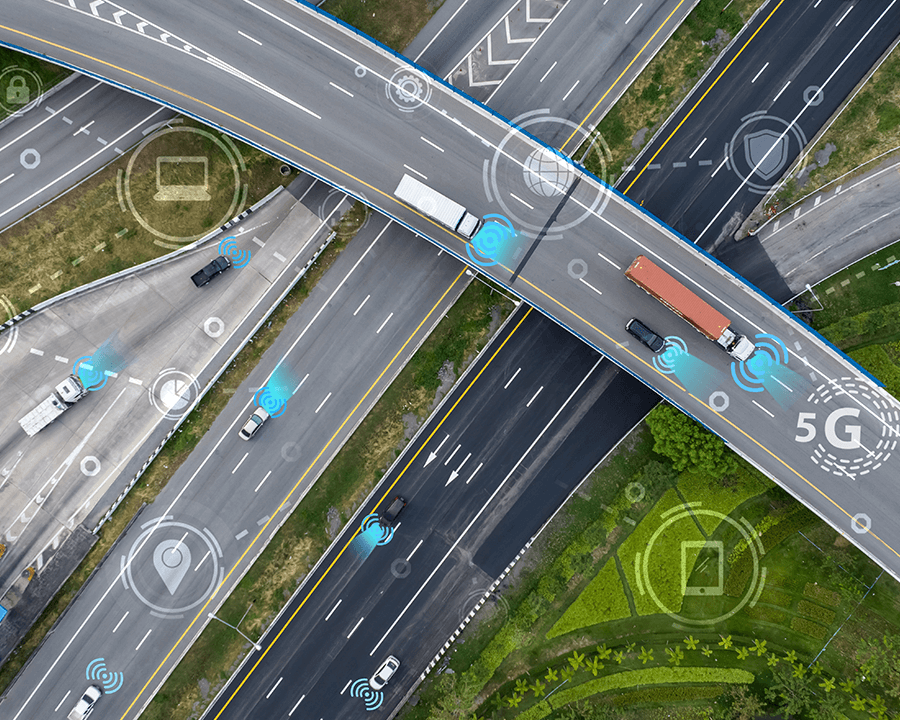
Connected Cars and Vehicle-to-Everything (V2X) Communication
Connected cars, equipped with internet connectivity and communication technology, can exchange data with other vehicles, infrastructure, and even pedestrians—a concept known as Vehicle-to-Everything (V2X) communication. While onboard ADAS provides vital safety functions using a vehicle’s own sensors, its effectiveness is limited by what those sensors can “see.”
Smart roads bridge this gap by extending the vehicle’s perception. Integrating ADAS with a smart road network allows connected cars to receive real-time alerts about hazards out of sight.
This V2X communication is especially important for pedestrian safety. Smart road infrastructure can detect a pedestrian’s presence (through a smartphone signal or dedicated sensor) and send a warning directly to an approaching vehicle’s ADAS. This creates a proactive safety net, allowing the car to react before the pedestrian is visible, reducing the risk of accidents and fostering safer coexistence between vehicles and people.
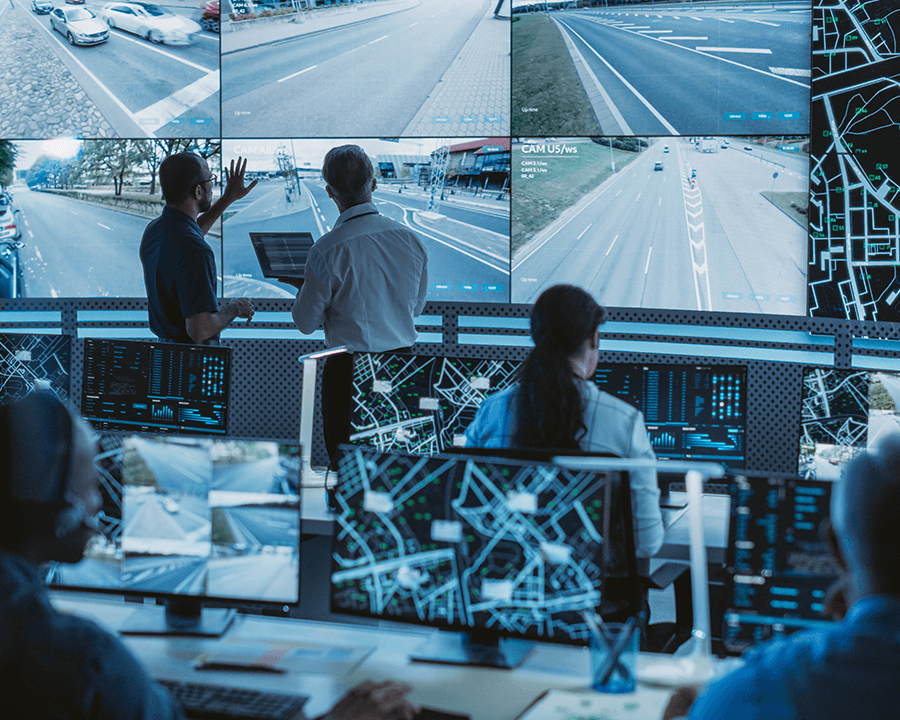
Digital Twins
A digital twin is a dynamic virtual model of a physical system that’s continuously updated with real-time data. Applied to smart roads, it creates a living, data-driven model of a city’s transportation network.
By integrating information from road sensors, traffic cameras, and other infrastructure, cities can monitor traffic, assess conditions, and predict maintenance needs with exceptional accuracy. This visibility enables proactive actions such as adjusting signals to ease congestion, rerouting vehicles after accidents, or repairing a pothole before it worsens.
Digital twins also support predictive modeling and simulation, allowing planners to test new road layouts or transit routes virtually before implementation. This capability helps optimize resources, improve emergency response, and enhance the efficiency and sustainability of urban operations.
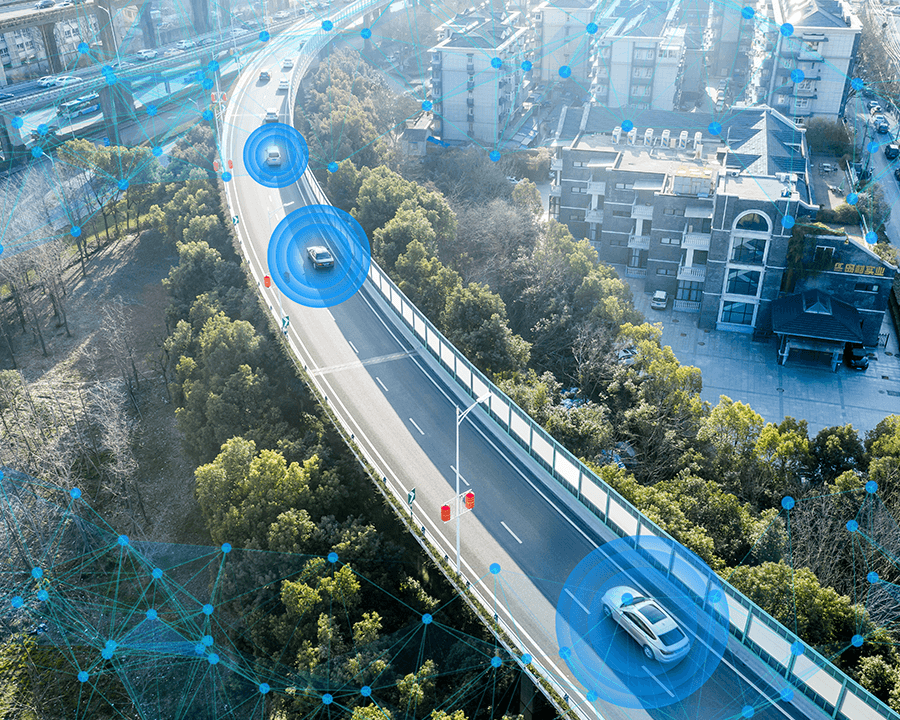
Intelligent Transportation Systems (ITS)
Intelligent Transportation Systems (ITS) use technology to improve the safety and efficiency of transportation networks. Their full potential emerges when paired with smart road infrastructure, transforming ITS from passive data collection into active, responsive management.
Smart roads equipped with sensors and advanced communication systems deliver continuous real-time data on traffic, speeds, surface conditions, and weather. This enables adaptive traffic control that adjusts signals in the moment to reduce congestion.
A smart road network can also detect and report incidents such as accidents or debris, allowing emergency and maintenance crews to respond quickly while updating digital signs or navigation systems to reroute traffic. This data-driven approach improves traffic flow, lowers fuel use and emissions, and enhances public safety.
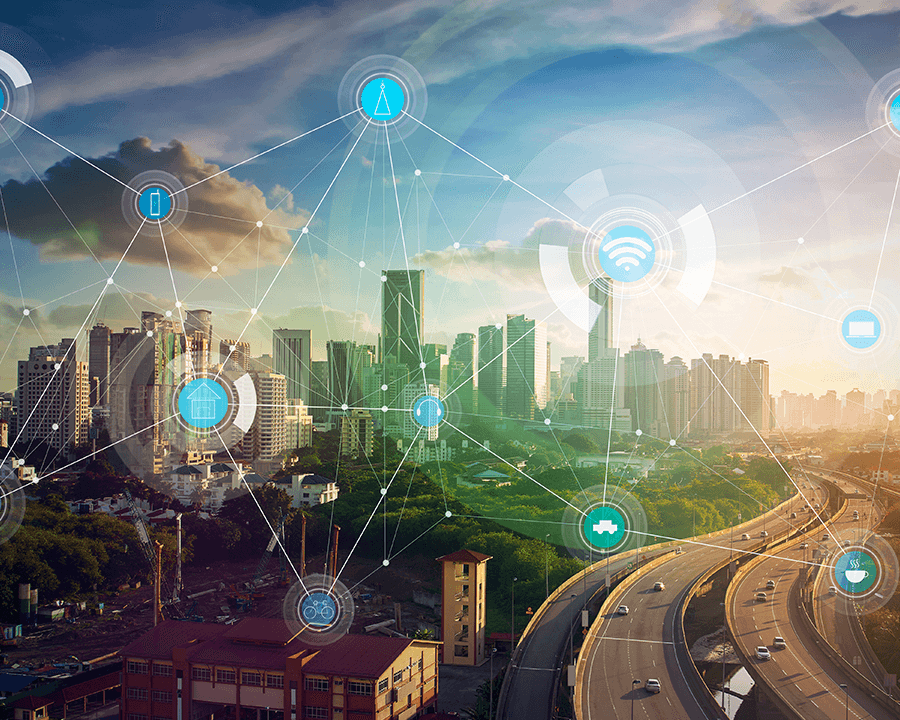
Smart Cities and the Role of Smart Roads
Smart cities use technology to enhance quality of life and the efficiency of urban services. At the heart of this transformation is transportation, and smart roads serve as its central nervous system.
By embedding sensors in pavement and integrating them with traffic signals, streetlights, and other infrastructure, municipalities gain continuous, high-fidelity data on congestion, road conditions, and air quality. This enables dynamic traffic management, where signals adjust automatically to improve flow, shorten commutes, and reduce emissions.
Smart road sensors can also detect wear, such as developing potholes, and alert maintenance crews before problems escalate, saving money and preventing accidents. By providing a unified, data-rich platform for monitoring and management, smart roads help cities make informed decisions, respond faster to incidents, and build safer, more sustainable communities.
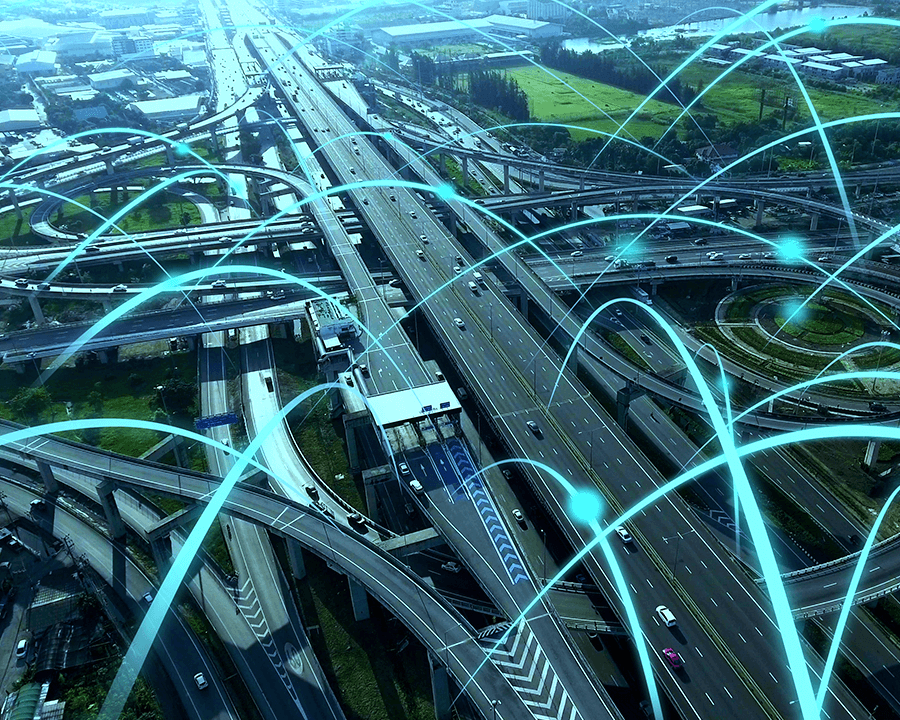
Smart Roads: The Future of Connected Infrastructure
Integrating technology into road infrastructure is transforming how cities operate, manage resources, and ensure public safety. Smart roads, equipped with networks of sensors, cameras, and communication systems, provide municipalities with continuous, real-time data.
This data enables adaptive traffic management that reduces congestion, travel time, and emissions. It also supports proactive maintenance—detecting early signs of wear, such as cracks or potholes—so repairs can be made before damage worsens, extending infrastructure and saving taxpayer money.
Most importantly, smart roads enhance safety. By giving cities a real-time view of traffic patterns, they can identify high-risk areas and automatically alert connected cars and pedestrians to potential hazards. This proactive, data-driven approach leads to safer, more efficient, and more sustainable urban transportation.
